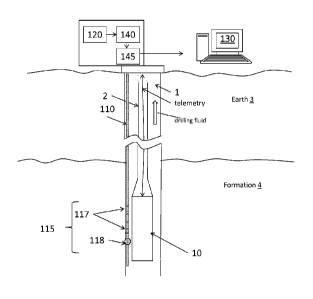Une partie des informations de ce site Web a été fournie par des sources externes. Le gouvernement du Canada n'assume aucune responsabilité concernant la précision, l'actualité ou la fiabilité des informations fournies par les sources externes. Les utilisateurs qui désirent employer cette information devraient consulter directement la source des informations. Le contenu fourni par les sources externes n'est pas assujetti aux exigences sur les langues officielles, la protection des renseignements personnels et l'accessibilité.
L'apparition de différences dans le texte et l'image des Revendications et de l'Abrégé dépend du moment auquel le document est publié. Les textes des Revendications et de l'Abrégé sont affichés :
| (12) Brevet: | (11) CA 2893085 |
|---|---|
| (54) Titre français: | BROUILLAGE DE POLARISATION DANS DES SYSTEMES INTERFEROMETRIQUES |
| (54) Titre anglais: | POLARIZATION SCRAMBLING IN INTERFEROMETER SYSTEMS |
| Statut: | Octroyé |
| (51) Classification internationale des brevets (CIB): |
|
|---|---|
| (72) Inventeurs : |
|
| (73) Titulaires : |
|
| (71) Demandeurs : |
|
| (74) Agent: | MARKS & CLERK |
| (74) Co-agent: | |
| (45) Délivré: | 2017-11-14 |
| (86) Date de dépôt PCT: | 2013-11-01 |
| (87) Mise à la disponibilité du public: | 2014-06-12 |
| Requête d'examen: | 2015-05-29 |
| Licence disponible: | S.O. |
| (25) Langue des documents déposés: | Anglais |
| Traité de coopération en matière de brevets (PCT): | Oui |
|---|---|
| (86) Numéro de la demande PCT: | PCT/US2013/068068 |
| (87) Numéro de publication internationale PCT: | WO2014/088738 |
| (85) Entrée nationale: | 2015-05-29 |
| (30) Données de priorité de la demande: | ||||||
|---|---|---|---|---|---|---|
|
La présente invention concerne un système et un procédé permettant d'obtenir et de traiter des balayages de sortie d'interféromètre. Le système de détection à interféromètre de l'invention comprend un laser accordable servant à émettre un signal de transmission et un brouilleur de polarisation servant à produire un changement d'état de polarisation sur le signal de transmission. Le système comprend également un interféromètre servant à produire un balayage de sortie sur la base du signal de transmission présentant le changement d'état de polarisation et un processeur servant à traiter le balayage de sortie.
A system and method to
obtain and process interferometer output
scans is described. The interferometer-based
sensor system includes a
tunable laser to transmit a transmit signal
and a polarization scrambler to produce
a polarization state change on the
transmit signal. The system also includes
an interferometer to provide an
output scan based on the transmit signal
with the polarization state change and a
processor to process the output scan.
Note : Les revendications sont présentées dans la langue officielle dans laquelle elles ont été soumises.
Note : Les descriptions sont présentées dans la langue officielle dans laquelle elles ont été soumises.

Pour une meilleure compréhension de l'état de la demande ou brevet qui figure sur cette page, la rubrique Mise en garde , et les descriptions de Brevet , États administratifs , Taxes périodiques et Historique des paiements devraient être consultées.
| Titre | Date |
|---|---|
| Date de délivrance prévu | 2017-11-14 |
| (86) Date de dépôt PCT | 2013-11-01 |
| (87) Date de publication PCT | 2014-06-12 |
| (85) Entrée nationale | 2015-05-29 |
| Requête d'examen | 2015-05-29 |
| (45) Délivré | 2017-11-14 |
Il n'y a pas d'historique d'abandonnement
Dernier paiement au montant de 263,14 $ a été reçu le 2023-10-19
Montants des taxes pour le maintien en état à venir
| Description | Date | Montant |
|---|---|---|
| Prochain paiement si taxe générale | 2024-11-01 | 347,00 $ |
| Prochain paiement si taxe applicable aux petites entités | 2024-11-01 | 125,00 $ |
Avis : Si le paiement en totalité n'a pas été reçu au plus tard à la date indiquée, une taxe supplémentaire peut être imposée, soit une des taxes suivantes :
Les taxes sur les brevets sont ajustées au 1er janvier de chaque année. Les montants ci-dessus sont les montants actuels s'ils sont reçus au plus tard le 31 décembre de l'année en cours.
Veuillez vous référer à la page web des
taxes sur les brevets
de l'OPIC pour voir tous les montants actuels des taxes.
| Type de taxes | Anniversaire | Échéance | Montant payé | Date payée |
|---|---|---|---|---|
| Requête d'examen | 800,00 $ | 2015-05-29 | ||
| Le dépôt d'une demande de brevet | 400,00 $ | 2015-05-29 | ||
| Taxe de maintien en état - Demande - nouvelle loi | 2 | 2015-11-02 | 100,00 $ | 2015-05-29 |
| Taxe de maintien en état - Demande - nouvelle loi | 3 | 2016-11-01 | 100,00 $ | 2016-10-07 |
| Taxe finale | 300,00 $ | 2017-09-28 | ||
| Taxe de maintien en état - Demande - nouvelle loi | 4 | 2017-11-01 | 100,00 $ | 2017-10-06 |
| Taxe de maintien en état - brevet - nouvelle loi | 5 | 2018-11-01 | 200,00 $ | 2018-10-11 |
| Taxe de maintien en état - brevet - nouvelle loi | 6 | 2019-11-01 | 200,00 $ | 2019-10-22 |
| Taxe de maintien en état - brevet - nouvelle loi | 7 | 2020-11-02 | 200,00 $ | 2020-10-21 |
| Taxe de maintien en état - brevet - nouvelle loi | 8 | 2021-11-01 | 204,00 $ | 2021-10-20 |
| Taxe de maintien en état - brevet - nouvelle loi | 9 | 2022-11-01 | 203,59 $ | 2022-10-24 |
| Taxe de maintien en état - brevet - nouvelle loi | 10 | 2023-11-01 | 263,14 $ | 2023-10-19 |
Les titulaires actuels et antérieures au dossier sont affichés en ordre alphabétique.
| Titulaires actuels au dossier |
|---|
| BAKER HUGHES INCORPORATED |
| Titulaires antérieures au dossier |
|---|
| S.O. |